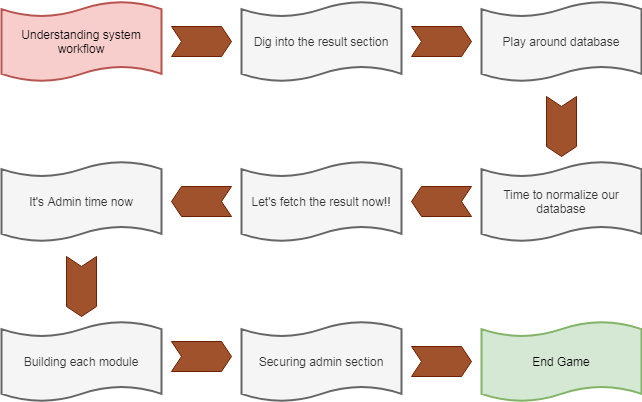You will be creating a full-stack website that uses the student information from a database as input and generates his/her result in PDF format as output which can then be downloaded and shared.
Objective
Project Context
In our day-to-day life, we come across various examination results such as school exam results, competitive exam results, college semester exam results, etc. How efficiently it produces someone's result by just filling in student details! But, have you ever thought of creating one? The ones who did basically went through the hectic job of perfecting their database and then using the knowledge of front-end and back-end to do so.
Developers are known for doing stuff automatically and efficiently. Thus we can have an easier take on it, by creating a system that accepts the student details as input and generates the desired result as output.
Project Stages

High-Level Approach
- We will be following a Top Down Approach throughout this project i.e. starting from the end goal, back tracing to the starting point.
- This project is having 3 sections that we have to implement namely Result Section for student's purpose, Database for storage purpose and Admin Section for administrative purpose.
- Firstly, we will be understanding the end goal of this project i.e. Result Section.
- Thereafter, we move towards the Database part starting from naive queries to optimizing it.
- Then, we will jump to the Admin Section for performing various activities that previously were done manually i.e. data addition and modification.
- Authentication for admin section will then take place.
- Then, we will Club things all together into our system.
Primary goals
- Performing normalization of the database.
- Performing various database queries.
- Automating the addition and modification of student data.
- Implement an authentication system for admin.
- Generate the result in PDF format and download it.
Applications
- Create and manage school or institute result portal.
- Create other types of management system.